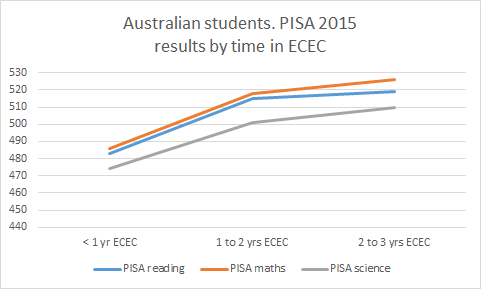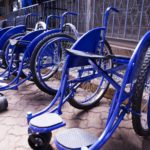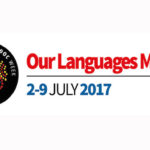Early learning key to improve education results in PISA and TIMSS tests
The latest results of international tests like TIMSS and PISA showed either no change in math and science scores for Australian students while other countries improved, or even displayed a decreased performance of Australian students. Samantha Page, CEO of Early Childhood Australia (ECA), explains why improved access to quality early learning is essential to turn this around.
A crucial factor is missing in all the discussion of how to address the declining performance of Australian students in international tests like PISA (Program for International Student Assessment) and TIMSS (Trends in International Maths and Science Study).
Problems with educational performance start well before children start school, and the most effective way to deal with this is to ensure children under five have access to quality early learning for at least two years before they start school. Ensuring children start primary school on a ‘level playing field’ is crucial for their future educational success.
ECA analysis of the PISA results shows that those 15 year olds who had one or two years of early childhood education (in 2003-4) did better in their scores for Reading, Maths and Science than children who had less than one year, or no attendance at early learning.

The quality of early childhood education programs has improved since 2009, with the introduction of the National Quality Framework. Also the rate of attendance of children in early learning has increased, especially for four year olds with the introduction of the Universal Access Agreement in 2010. So we could expect the PISA results to start reflecting these improvements by 2020.
Under the National Quality Framework all childcare and pre-school programs are rated according to how well they meet seven areas of the National Quality Standard. To meet or exceed the standards centres must provide a play-based curriculum in an age-appropriate setting, by qualified early years teachers and educators. (1)
However, we still need to address the fact that one in five Australian children are developmentally vulnerable when they start school (2). Not enough vulnerable children are accessing the amount or quality of early childhood education needed to give them a ‘level playing field’ – improving access to quality early learning for these children will make a significant difference to their education performance in primary and high school.
Australian and international studies show that boosting children’s skills and development in the early years increases their ability to learn and succeed when they attend school, and beyond
The Mitchell Institute’s recent report Preschool: Two years are better than one documents numerous studies that show increased education performance of children in primary school who attended up to two years of quality early learning. (3)
The UK Effective Pre-School, Primary & Secondary Education study found that children who attended quality early learning had higher grades at school up to 13 years later, were better able to manage their behaviour and had lower levels of hyperactivity . The longer they spent in pre-school and the higher the quality, the better the grades, and the more likely children were to continue on an academic pathway. (4)
It is re-assuring to hear Education Minister Simon Birmingham talk about the need to provide a solid foundation for children’s learning in the early years, which includes quality teaching.
To achieve this the government can take steps to:
- ensure childcare subsidy reform promotes increased participation in quality early learning programs for children at risk of educational disadvantage, including Aboriginal and Torres Straits Islander Children; and
- extend the National Partnership Agreement with State and Territory Governments on Universal Preschool to provide at least 15 hours/week of quality preschool education to children in the year before school and eventually to provide this over 2 years rather than 1.
Improving access to quality early learning that amplifies children’s development is the best way to increase Australia’s prosperity and ensure the next generation is ready for the jobs of the future.
- National Quality Framework Factsheet, ACEECQA
- Australian Early Development Census 2015
- Pre-School: Two years are better than one, Fox, S and Geddes, M, Mitchell Institute 2016
- UK Effective Pre-School, Primary & Secondary Education study Institute of Education, University College London
Samantha Page is the Chief Executive Officer of Early Childhood Australia (ECA). Early Childhood Australia is the peak advocacy body for children under eight, their families and early childhood professionals. Sam has worked in a variety of positions within in the community, public and private sectors, spanning service delivery and service management, policy development, change management and public administration. She has worked closely with community sector leaders, Members of Parliament, senior bureaucrats in Federal Government agencies as well as peak bodies, research institutes and universities. Sam’s current appointments include the Board of the Australian Institute of Health and Welfare.












